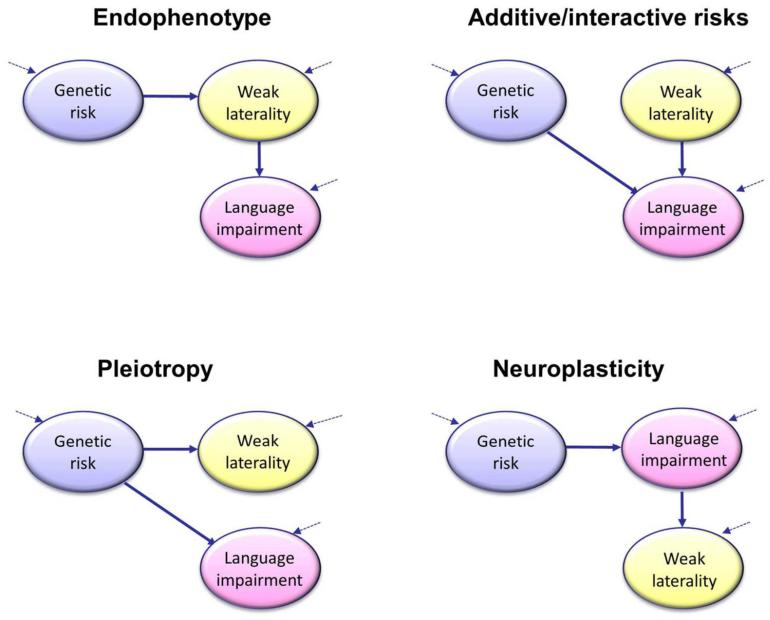Figure 1.
Four path diagrams of the association between weak cerebral lateralization for language and language/literacy problems. These causal models are simplified abstractions and not mutually exclusive, but they illustrate the differing predictions about the pattern of associations that might be found between genotypes, language/literacy impairment and cerebral lateralization. The Endophenotype model depicts the situation where genes that influence risk for language impairment do so by affecting cerebral lateralization. This model predicts that cerebral lateralization should be at least as heritable as language impairment, with the same genes affecting both traits. The Pleiotropy model also assumes that the same genes that lead to risk for language impairment also affect cerebral lateralization, but there is no direct causal link: weak laterality and language impairment co-occur because they have common origins, not because one causes the other. In the Additive/interactive risks model, the genetic risk factors for language impairment do not affect lateralization. However, weak laterality, which could have genetic and/or non-genetic origins, exerts an independent causal influence on language impairment, which may add or interact with other genetic risk factors. In the Neuroplasticity model, cerebral lateralization has no causal effect on language; rather, language impairment influences how the brain develops and is associated with weaker cerebral lateralization. The dotted arrows indicate that for each construct there will be sources of variation in addition to those depicted in the model.

